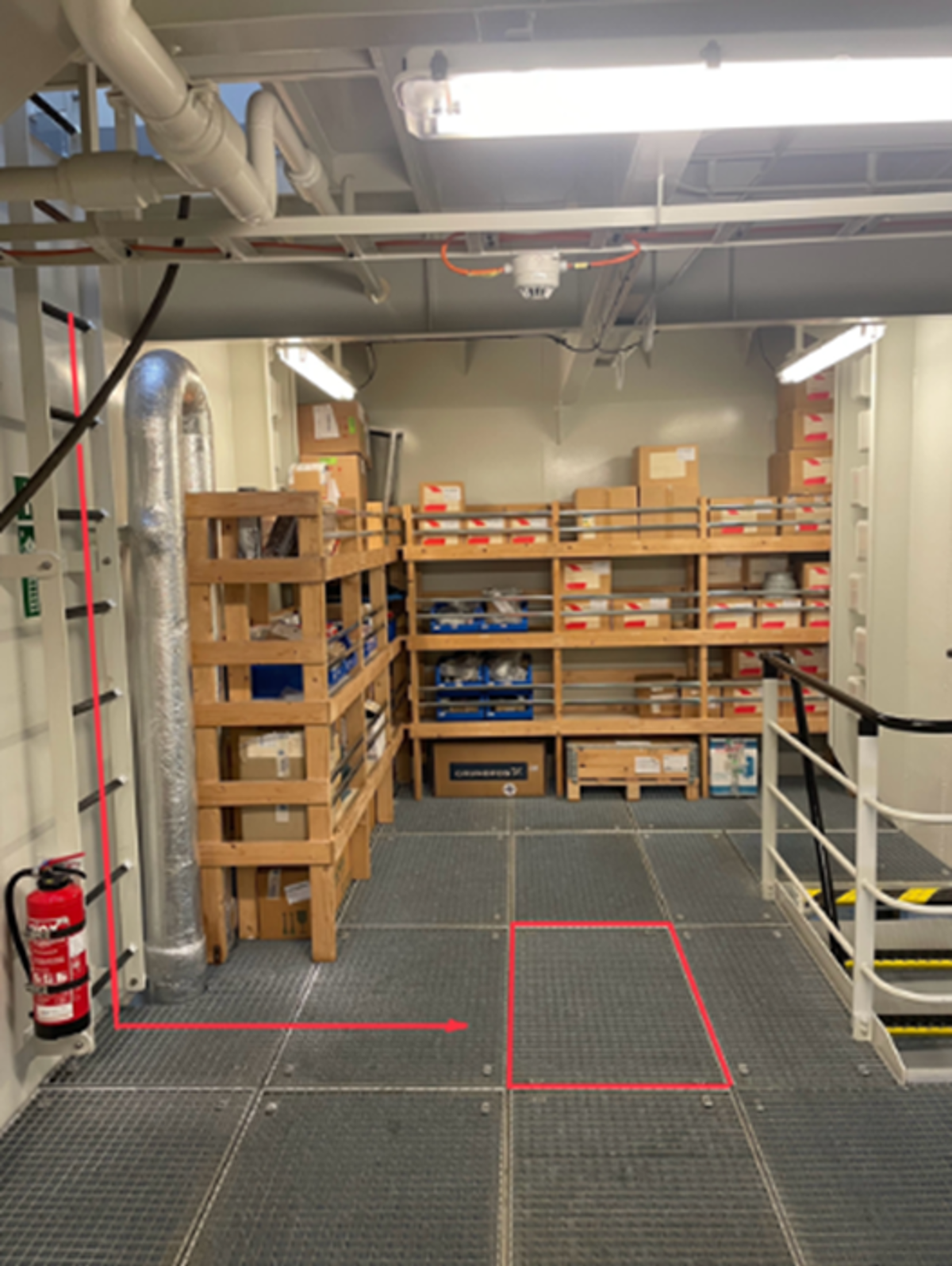Near miss: narrowly avoided fall from height due to missing deck gratings
- Safety Flash
- Published on 20 February 2025
- Generated on 22 December 2025
- IMCA SF 03/25
- 2 minute read
Jump to:
After a grating was removed, the Chief Engineer, on the way to inspect the work, nearly fell 4-5m.
What happened?
During a docking, a grating was removed from a mezzanine level in the bow thruster space to allow lifting of machinery components from the bottom plates. Signs and barriers were installed at the bottom of the companionway leading up to the mezzanine, and around the missing section of deck itself. On completion of the lifting operation, the yard contractors removed the lifting equipment, along with the barriers around the hole. The barrier across the stairs remained in place, but the grating was not replaced at this time.
Subsequently, the Chief Engineer, on the way to inspect the work, entered the mezzanine level using a vertical access ladder directly from the forecastle, which had not been signed/barriered. At the bottom of the ladder he turned, took one step, and his next step was into the hole. He only managed to prevent a fall of 4-5m by instinctively reaching out to break his fall, ending up supported by his forearms and one leg, with the other hanging through the hole.

Red box showing where grating was removed; red line shows route of Chief Engineer
What went right?
The main access, and the worksite itself had been well barriered and signed.
What went wrong?
- The possibility that workers would use the vertical ladder had not been considered.
- It is unclear why, after removing the lifting gear and worksite barriers, the grating had not simply been replaced immediately, there being no further work planned.
What was the cause?
- Lack of hazard awareness in missing the possibility that a ‘secondary’ access route could be used.
- The hierarchy of risk controls was not applied – replacing the grating straight away would have eliminated the hazard, as well as the need for any signs and barriers at all.
Lessons and actions
The incident was investigated by the yard, and the need for vigilance in planning tasks was stressed at inter-departmental work planning meetings. No similar events were observed during the remainder of the stay in dock.
Preventing the use of the vertical ladder (which formed part of an emergency escape route) for general access was considered, but this was deemed to be a practicable, safe means of access, with no more risk attached than several other vertical ladders around the ship.
Related Safety Flashes
-
IMCA SF 24/23
16 October 2023
-
-
IMCA SF 03/19
27 February 2019
-
IMCA SF 19/20
23 June 2020
-
IMCA Safety Flashes summarise key safety matters and incidents, allowing lessons to be more easily learnt for the benefit of the entire offshore industry.
The effectiveness of the IMCA Safety Flash system depends on the industry sharing information and so avoiding repeat incidents. Incidents are classified according to IOGP's Life Saving Rules.
All information is anonymised or sanitised, as appropriate, and warnings for graphic content included where possible.
IMCA makes every effort to ensure both the accuracy and reliability of the information shared, but is not be liable for any guidance and/or recommendation and/or statement herein contained.
The information contained in this document does not fulfil or replace any individual's or Member's legal, regulatory or other duties or obligations in respect of their operations. Individuals and Members remain solely responsible for the safe, lawful and proper conduct of their operations.
Share your safety incidents with IMCA online. Sign-up to receive Safety Flashes straight to your email.